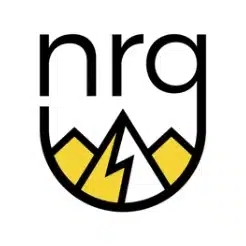Sciatica is a common condition that affects many people worldwide. It is a term used to describe pain that radiates along the path of the sciatic nerve, which runs from the lower back, through the buttocks, and down the back of each leg. The pain caused by sciatica can be sharp, shooting, or burning and may also be accompanied by numbness, tingling, or muscle weakness in the affected leg.
The most common cause of sciatica is a herniated or slipped disc in the lumbar spine. Other potential causes include spinal stenosis, degenerative disc disease, spondylolisthesis, or piriformis syndrome. However, it is important to note that sciatica can also be caused by non-spinal issues such as tumors, infections, or pregnancy.
Physiotherapy is one of the most effective treatments for sciatica. It involves the use of specialized exercises, manual therapy techniques, and other non-invasive interventions to help reduce pain, improve mobility, and prevent future episodes of sciatica. In addition to providing pain relief, physiotherapy can also help to address underlying biomechanical issues that may be contributing to the symptoms of sciatica through nerve compression or irritation.

Overall, physiotherapy plays a critical role in the management and treatment of sciatica. By addressing the root cause of the condition and providing targeted treatment, patients can experience significant relief from their symptoms and improve their overall quality of life.
How does sciatica physiotherapy work?
Sciatica physiotherapy works by addressing the underlying causes of sciatic nerve compression or irritation of spinal cord, including herniated or slipped discs, spinal stenosis, degenerative disc disease, and other spinal conditions. The primary goal of physiotherapy for sciatica is to reduce pain, improve mobility, and prevent future episodes of sciatica.
Physiotherapy for sciatica typically involves a combination of exercises, manual therapy techniques, and other non-invasive interventions. The specific treatment plan will depend on the individual patient’s needs, symptoms, and underlying conditions.
Here are some of the physiotherapy techniques commonly used for sciatica treatment:
Exercise Therapy
Exercise therapy is a key component of physiotherapy for sciatica. Specific exercises are prescribed to improve strength, flexibility, and mobility, and to reduce pain and inflammation. These exercises may include stretching, strengthening, and conditioning exercises, as well as postural and core stability exercises.
Manual Therapy
Manual therapy techniques such as massage, joint mobilization, and spinal manipulation are used to relieve pain, reduce inflammation, and improve mobility. These techniques can help to relieve pressure on the sciatic nerve and improve the function of surrounding muscles and tissues.
Heat and Cold Therapy
Heat and cold therapy can be used to reduce inflammation, relieve pain, and promote healing. Heat therapy helps to increase blood flow and relax muscles, while cold therapy helps to reduce inflammation and numb pain.
Ultrasound Therapy
Ultrasound therapy involves the use of high-frequency sound waves to penetrate deep into tissues and promote healing. This technique can be used to reduce inflammation and promote tissue repair in the affected area.
Electrical Stimulation
Electrical stimulation involves the use of mild electrical impulses to stimulate muscles and nerves in the affected area. This technique can help to reduce pain and improve muscle strength and function.
Overall, sciatica physiotherapy works to treat sciatica by providing targeted, non-invasive treatment to address the root cause of the condition and reduce pain and inflammation. By using a combination of techniques, physiotherapy can help to improve mobility and prevent future episodes of sciatica.
What are the benefits of sciatica physiotherapy?
Sciatica physiotherapy has many benefits for individuals who are experiencing sciatica symptoms. Here are some of the most significant benefits of physiotherapy for:
Reduced Pain and Inflammation
Sciatica physiotherapy can help to reduce pain and inflammation caused by sciatica. Through the use of exercises and manual therapy techniques, physiotherapy can help to reduce pressure on the sciatic nerve and improve the function of surrounding muscles and tissues. This, in turn, can help to alleviate pain and reduce inflammation in the affected area.
Improved Mobility and Flexibility
Sciatica can cause a significant reduction in mobility and flexibility. However, physiotherapy can help to improve these factors by addressing the underlying biomechanical issues that may be contributing to the condition. Through a combination of exercises and manual therapy techniques, physiotherapy can help to improve range of motion and flexibility in the affected area, allowing individuals to move and function more comfortably.
Prevention of Future Sciatica Flare-Ups
One of the most significant benefits of sciatica physiotherapy is its ability to prevent future episodes of sciatica. By addressing the underlying causes of the condition and providing targeted treatment, physiotherapy can help to prevent further nerve compression or irritation, reducing the likelihood of future sciatica flare-ups.
Overall, sciatica physiotherapy provides a non-invasive and effective treatment option for individuals experiencing sciatica symptoms. By addressing the root cause of the condition and providing targeted treatment, physiotherapy can help to reduce pain and inflammation, improve mobility and flexibility, and prevent future episodes of serious sciatica pain.
Who is a good candidate for sciatica physiotherapy?
Physiotherapy for sciatica is a safe and effective treatment option for many individuals experiencing severe pain from sciatica symptoms. Here are some of the types of patients who may benefit from physiotherapy for sciatica:
Patients with Acute or Chronic Sciatica
Whether a patient is experiencing acute or chronic sciatica, physiotherapy can provide significant relief from pain and improve mobility. Physiotherapy can also help to prevent future episodes of sciatica in patients with chronic conditions.
Patients Who Want to Avoid Surgery
For many individuals with sciatica, surgery may be recommended as a last resort. However, physiotherapy can provide a non-invasive alternative to surgery, helping patients to manage their symptoms without undergoing a surgical procedure.
Patients Who Want to Improve Their Quality of Life
Sciatica can significantly impact a patient’s quality of life, causing pain, reducing mobility, and limiting their ability to perform daily activities. Physiotherapy can help to improve these factors, allowing patients to move and function more comfortably and improve their overall quality of life.
Factors That May Impact the Effectiveness of Physiotherapy Treatment:
While physiotherapy can be an effective treatment option for many individuals with sciatica, there are some factors that may impact the effectiveness of treatment. These factors may include:
Severity of the Condition
The severity of a patient’s sciatica symptoms may impact the effectiveness of physiotherapy treatment. Patients with more severe symptoms may require more intensive treatment or a longer course of treatment to achieve significant relief.
Underlying Medical Conditions
Patients with underlying medical conditions such as diabetes or arthritis may require specialized treatment to manage their sciatica symptoms effectively.
Patient Compliance
The effectiveness of physiotherapy treatment may also be impacted by a patient’s compliance with their treatment plan. Patients who are committed to following their treatment plan and completing their exercises and therapy sessions are more likely to experience significant relief from their symptoms.
Overall, many patients with sciatica can benefit from physiotherapy. However, the effectiveness of treatment may be impacted by a variety of factors, including the severity of the condition, underlying medical conditions, and patient compliance with physical therapy. It is important to work closely with a physiotherapist to develop a customized treatment plan that addresses individual needs and factors.
What can you expect during a sciatica physiotherapy session?
Sciatica physiotherapy sessions typically involve a combination of exercises, manual therapy techniques, and other non-invasive interventions. Here’s an overview of what typically happens during a typical physiotherapy session for:
Assessment
During the first session, the physiotherapist will assess the patient’s medical history, current symptoms, and physical condition. They may also perform a physical examination to assess range of motion, muscle strength, and other factors.
Treatment Plan Development
Based on the assessment, the physiotherapist will develop a customized treatment plan that addresses the patient’s specific needs and symptoms. This may include exercises, manual therapy techniques, and other interventions.
Exercise Therapy
Exercise therapy is a critical component of sciatica physiotherapy. Patients will be instructed on specific exercises to perform at home or in the clinic, which are designed to improve strength, flexibility, and mobility. These exercises may include stretching, strengthening, and conditioning exercises, as well as postural and core stability exercises.
Manual Therapy
Manual therapy techniques such as massage, joint mobilization, and spinal manipulation may be used to relieve pain, reduce inflammation, and improve mobility. These techniques can help to relieve pressure on the sciatic nerve and improve the function of surrounding muscles and tissues.
Heat and Cold Therapy
Heat and cold therapy may be used to reduce inflammation, relieve pain, and promote healing. Heat therapy helps to increase blood flow and relax muscles, while cold therapy helps to reduce inflammation and numb pain.
Education and Advice
Patients will be given education and advice on how to manage their condition at home, including lifestyle changes, ergonomic adjustments, and other interventions.
Overall, a typical sciatica physiotherapy session involves a combination of exercises, manual therapy techniques, and other interventions, all designed to reduce pain, improve mobility, and prevent future episodes of sciatica. It is important to work closely with a physiotherapist to ensure that the treatment plan is tailored to the patient’s individual needs and goals.
How long does it take to see results from sciatica physiotherapy?
The timeline for seeing improvement in sciatica symptoms can vary depending on the individual patient and the severity of their condition. However, in general, patients with sciatic pain can expect to see improvement within a few weeks of starting physiotherapy treatment.

During the first few weeks of treatment, patients may experience a reduction in pain and inflammation, improved mobility, and increased strength and flexibility. As treatment progresses, patients may continue to see improvements in their symptoms, including reduced back pain, and increased function.
Factors That May Impact the Duration of Treatment:
While many patients can see significant improvement in their symptoms within a few weeks of starting physiotherapy treatment, the duration of treatment can vary depending on a variety of factors. These factors may include:
- Severity of the Condition: The severity of a patient’s sciatica symptoms can impact the duration of treatment. Patients with more severe symptoms may require a longer course of treatment to achieve significant relief.
- Underlying Medical Conditions: Patients with underlying medical conditions such as diabetes or arthritis may require specialized treatment to manage their sciatica symptoms effectively, which may impact the duration of treatment.
- Patient Compliance: The duration of treatment may also be impacted by a patient’s compliance with their treatment plan. Patients who are committed to following their treatment plan and completing their exercises and therapy sessions as prescribed are more likely to experience significant relief from their symptoms.
- Other Factors: Other factors that may impact the duration of treatment include age, overall health, and the presence of other medical conditions.
Overall, while many patients can see improvement in their sciatica symptoms within a few weeks of starting physiotherapy treatment, the duration of treatment can vary depending on individual factors. It is important to work closely with a physiotherapist to develop a customized treatment plan and to follow through with the recommended treatment plan to achieve the best possible outcomes.

Conclusion
In conclusion, sciatica physiotherapy is an effective and non-invasive treatment option for individuals experiencing sciatica symptoms. Here are some of the key points to keep in mind about sciatica physiotherapy:
- Sciatica physiotherapy can help to reduce pain, inflammation, and improve mobility and flexibility in patients with sciatica.
- Exercise therapy, manual therapy, heat and cold therapy, ultrasound therapy, and electrical stimulation are some of the techniques used in sciatica physiotherapy.
- Patients with acute or chronic sciatica, those who want to avoid surgery, and those who want to improve their quality of life can benefit from physiotherapy.
- The duration of treatment may vary depending on individual factors such as the severity of the condition, underlying medical conditions, patient compliance, age, and overall health.
- It is important to work closely with a physiotherapist to develop a customized treatment plan and to follow through with the recommended treatment plan to achieve the best possible outcomes.
Overall, seeking professional help for sciatica treatment is critical for achieving optimal results. A physiotherapist can provide a comprehensive assessment and develop a customized treatment plan to help alleviate sciatic nerve pain now, improve mobility, and prevent future episodes of sciatica. With the right treatment plan and commitment to the recommended exercises and therapy sessions, patients can experience significant relief from their sciatica symptoms and improve their overall quality of life.
References related to sciatica physiotherapy:
- Patel, K., & Gross, A. (2017). Sciatica: A systematic review and meta-analysis of symptomatic treatment options. Current Physical Medicine and Rehabilitation Reports, 5(4), 276-286.
- Chen, L., Michalsen, A., & Steckhan, N. (2017). Treatment of chronic pain with complementary and alternative medicine (CAM): a review of best evidence. Chinese Journal of Integrative Medicine, 23(5), 403-412.
- Kong, Y. S., & Kim, H. J. (2019). The effect of physiotherapy on functional outcomes in patients with sciatica: a systematic review and meta-analysis. Journal of physical therapy science, 31(4), 383-388.
- Delitto, A., George, S. Z., Van Dillen, L. R., Whitman, J. M., Sowa, G., Shekelle, P., … & Godges, J. J. (2012). Low back pain: clinical practice guidelines linked to the international classification of functioning, disability, and health from the orthopaedic section of the American Physical Therapy Association. Journal of Orthopaedic & Sports Physical Therapy, 42(4), A1-A57.
- Nadler, S. F., Wu, K. D., Galski, T., Feinberg, J. H., & Lowry, C. (2004). Chiropractic manipulation for the treatment of acute and chronic pain in the sacroiliac joint region. Journal of manipulative and physiological therapeutics, 27(7), 427-432.






0 Comments